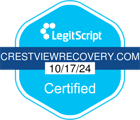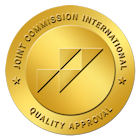Understanding how long OxyContin remains in your system is crucial for anyone navigating the path to recovery. As a powerful opioid prescribed for pain management, OxyContin presents significant challenges due to its potential for addiction and dependence. Detection times vary depending on the type of drug test used.
For individuals seeking recovery, understanding these timelines is vital. It helps inform personal health decisions. At Crestview Recovery in Portland, Oregon, we are committed to providing comprehensive treatment and support to those battling addiction. Our experienced team guides individuals through personalized recovery journeys, helping them understand the complexities of addiction, including how substances like OxyContin interact with their bodies. By offering tailored programs, Crestview Recovery stands as a beacon of hope and recovery for those ready to reclaim their lives.
Understanding OxyContin: An Overview
OxyContin, the brand name for the opioid analgesic oxycodone, is commonly prescribed for managing severe pain. It is designed to release oxygen in a controlled manner, providing long-term relief for those with chronic pain conditions.
The primary active ingredient in OxyContin is oxycodone, a semi-synthetic opioid derived from thebaine, a component of the opium poppy. OxyContin tablets are formulated in various strengths and are designed with a special proprietary coating that allows for its extended-release properties.
In addition to oxycodone, the formulation includes inactive ingredients that aid in the tablet’s integrity and absorption. These components can vary among manufacturers but typically include binders, fillers, and coating agents, all of which are critical for the medicine’s effectiveness and release profile. The careful selection of these ingredients ensures that the medication remains stable and effective throughout its shelf life, allowing patients to receive consistent dosing over time.
OxyContin is primarily used to treat moderate to severe pain, especially in patients who require continuous, around-the-clock relief. This can include post-surgical patients, those suffering from cancer, or individuals with chronic conditions like arthritis.
Given its potency, medical professionals prescribe OxyContin with caution, balancing the benefits against the risks of addiction and dependence. Therefore, prescriptions are typically monitored closely, encouraged for short-term use, and often part of a broader pain management strategy. In many cases, healthcare providers may recommend integrating non-opioid pain relief methods, such as physical therapy, acupuncture, or cognitive-behavioral therapy, to create a comprehensive approach to pain management. This multifaceted strategy can help mitigate the risks associated with opioid use while still providing patients with the relief they need to maintain their quality of life.
The Science Behind OxyContin Absorption
Understanding how OxyContin is absorbed in the body is key to comprehending how long it may remain detectable in various tests. Upon ingestion, the medication undergoes several physiological processes that influence its effectiveness and duration in the system.
How the Body Processes OxyContin
Once OxyContin is ingested, it travels through the gastrointestinal tract, where it is broken down and absorbed into the bloodstream. The extended-release format allows oxycodone to be released gradually, providing longer-lasting pain relief. The peak concentration of the drug is typically reached within 1 to 2 hours after consumption, although this can vary based on individual metabolism and body chemistry.
After absorption, oxycodone is metabolized primarily in the liver, where it is converted into various metabolites, some of which are active and contribute to the pain-relieving effects. The drug and its metabolites are then excreted through urine. The elimination half-life of OxyContin can vary but generally falls between 3 to 6 hours for most individuals. This means that while the immediate effects may wear off, traces of the drug can linger in the system for a longer period, depending on the dosage and frequency of use.
OxyContin Detection Times in Different Tests

Detection times for OxyContin can vary based on the type of drug test employed. Different tests measure the presence of oxycodone in various biological samples, and understanding these can help individuals anticipate how long the drug will be detectable in their system. The choice of testing method often depends on the context, such as employment requirements, legal situations, or medical assessments, each with its own implications for privacy and accuracy.
Urine tests are the most common method for detecting OxyContin. Generally, oxycodone can be detected in urine for up to 3 to 4 days after the last dose. However, factors such as hydration levels, frequency of use, and individual metabolism can significantly influence this timeframe. It’s worth noting that chronic users may have longer detection times due to the accumulation of the drug in their system. Additionally, urine tests can sometimes produce false positives, leading to the necessity of confirmatory testing, which can add complexity to the interpretation of results.
Blood tests tend to have a shorter detection window compared to urine tests. OxyContin is typically detectable in blood for approximately 24 hours after ingestion. Due to the complexity and sensitivity of blood tests, they are often employed in more clinical settings rather than for routine drug screening. This method is particularly useful in emergency situations where immediate results are required, such as in cases of overdose or when assessing impairment in a medical context. However, the invasive nature of blood draws can deter some individuals from this type of testing.
Saliva tests can detect OxyContin for about 1 to 4 days following use. This type of test is non-invasive and increasingly popular for workplace screening, although it may not be as widely utilized as urine testing. Saliva tests are particularly advantageous because they can be administered on-site, providing immediate results that can help employers make quick decisions regarding employee safety. Nonetheless, the detection window is shorter, which may not be suitable for all testing scenarios, especially those requiring long-term monitoring.
Hair follicle tests are unique in that they can detect drug use over a much longer period. OxyContin can be detected in hair for up to 90 days. However, this method is primarily used for thorough investigations and is less common in standard drug screening. The process involves collecting a small sample of hair, which is then analyzed for traces of drugs. This method is particularly useful in legal and forensic contexts, as it provides a historical record of drug use, unlike other tests that only reflect recent consumption. However, it is important to note that hair tests can be influenced by external factors, such as environmental exposure to drugs, which may complicate the interpretation of results.
Factors Affecting How Long OxyContin Stays in Your System
Several individual factors can greatly influence how long OxyContin and other opioids remain detectable in the body. These factors include a person’s metabolic rate, overall health, and patterns of drug use.
The metabolic rate varies significantly among individuals, meaning that two people can process the same substance at different speeds. Those with a higher metabolic rate may eliminate OxyContin from their systems more quickly, while those with a slower metabolism may retain it for an extended period. Factors such as age, genetics, and physical activity levels can all contribute to these variations. For instance, younger individuals typically have faster metabolism rates, which can lead to quicker clearance of substances like OxyContin.
Body composition also plays a crucial role in drug metabolism. Generally, individuals with higher body fat percentages may store the drug longer, as many substances, including opioids, can accumulate in fatty tissues. This storage can lead to prolonged effects and increased detection times in urine and blood tests. Moreover, hydration levels can also influence how drugs are metabolized and excreted. Well-hydrated individuals may experience faster clearance of OxyContin, as fluids help facilitate kidney function and the elimination of substances from the body.
Overall health status can affect liver and kidney function, and vital organs for drug elimination. Individuals with compromised liver function, for instance, may process OxyContin at a slower rate. Conditions such as liver disease, diabetes, or chronic kidney issues can significantly alter how long opioids remain in the system, necessitating careful monitoring and potential dosage adjustments by healthcare providers.
The frequency of OxyContin use can significantly affect how long it stays in one’s system. Chronic use leads to cumulative build-up in the body, prolonging detection times. This accumulation can create a cycle of dependence, as users may find they require higher doses to achieve the same pain-relieving effects, further complicating the metabolic process.
Additionally, the dosage taken is critical. Higher doses will generally remain in the system longer than lower doses, and those who take OxyContin around the clock may experience a different metabolic response compared to those who use it sporadically. The timing of doses can also impact drug levels in the bloodstream; for example, taking OxyContin shortly after a meal may slow absorption, affecting how long the drug remains detectable.
How Crestview Recovery Treats OxyContin Addiction

At Crestview Recovery, treating OxyContin addiction involves a comprehensive approach that addresses both the physical and psychological aspects of recovery. The journey begins with detox and withdrawal management, a critical first step in the recovery process. This phase involves safely managing withdrawal symptoms under medical supervision to ensure the individual’s comfort and safety. Our experienced team provides 24/7 support during this period, utilizing evidence-based practices to ease symptoms and stabilize the patient.
Inpatient and Outpatient Addiction Treatment
Following detox, Crestview Recovery offers both inpatient and outpatient programs in Portland, OR, designed to meet the varying needs of individuals seeking treatment. Our inpatient program provides a structured, supportive environment where patients can focus entirely on their recovery without the distractions of everyday life. This residential setting offers intensive therapy, group sessions, and holistic activities aimed at fostering healing and personal growth.
For those who require more flexibility, our outpatient programs offer a less restrictive option while still providing access to high-quality care. These programs allow individuals to continue their daily responsibilities while attending therapy sessions and support groups, making it an ideal choice for those with family or work commitments.
Addiction Therapy
Behavioral therapies play a crucial role in our treatment plans, focusing on changing patterns of thinking and behavior that contribute to addiction. These therapies, combined with robust relapse prevention strategies, equip individuals with the tools they need to handle triggers and maintain sobriety. Techniques such as cognitive behavioral therapy (CBT) and dialectical behavior therapy (DBT) are employed to address underlying issues and develop coping mechanisms.
Crestview Recovery is committed to providing personalized treatment plans tailored to each individual’s unique needs and circumstances. Our team works closely with patients to help them overcome addiction and build a foundation for long-term recovery, reinforcing the message that with the right support, recovery is achievable.
Contact Crestview Recovery To Learn More!

If you or someone you love is impacted by OxyContin addiction or addiction to any opioid, please reach out to learn more about the treatment options we have available.
At Crestview Recovery in Portland, Oregon, we recognize the complexities of overcoming OxyContin addiction. Our dedicated team offers personalized treatment plans and expert guidance to support individuals every step of the way. If you or someone you care about is struggling with OxyContin addiction, we encourage you to reach out for help. Let Crestview Recovery be your partner in the journey toward reclaiming a healthy, fulfilling life. Remember, recovery is possible, and hope is just a call or visit away!
































